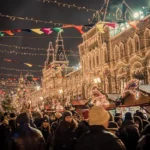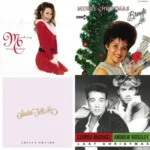The holiday season is synonymous with festive decorations, warm gatherings, and, of course, the timeless melodies that fill the air. Among the vast repertoire of Christmas songs, there’s one tune that stands out as the undisputed champion of recorded renditions – a classic that has transcended generations and cultures. Join us on a journey as we unwrap the rich history and enduring charm of the most recorded Christmas song: “Silent Night.”
“Silent Night” had humble beginnings in the small village of Oberndorf, Austria. It was first performed on Christmas Eve in 1818 at the St. Nicholas Church. The lyrics were penned by Joseph Mohr, a parish priest, while the melody was composed by Franz Xaver Gruber, the church’s organist. Little did they know that this simple carol would become a global phenomenon, spreading joy and tranquility worldwide.
One of the key factors contributing to the widespread popularity of “Silent Night” is its universal theme of peace and serenity. As the song traveled beyond Austrian borders, it was translated into numerous languages, allowing people of diverse cultures to embrace its heartfelt message. The song’s ability to resonate with people from different backgrounds has made it a staple in Christmas celebrations across the globe.
“Silent Night” holds the Guinness World Record for being the most recorded Christmas song in history. The numbers speak volumes – with over 733 different versions recorded and counting. The song’s enduring appeal has inspired countless artists, spanning various genres and generations, to put their unique spin on it. From traditional renditions by choirs and orchestras to modern interpretations by pop and rock artists, the song’s adaptability has kept it relevant and beloved for nearly two centuries.
Several iconic performances of “Silent Night” have left an indelible mark on the collective memory of music enthusiasts. Notable renditions include the enchanting version by Bing Crosby, which became a chart-topping hit in 1935, and the soulful interpretation by Elvis Presley during his televised Christmas special in 1968. These performances, among many others, have contributed to the song’s enduring legacy.
What makes “Silent Night” so enduring? At its core, the song’s beauty lies in its simplicity. The uncomplicated melody, coupled with heartfelt lyrics, creates a poignant and timeless piece that resonates with people of all ages. The song’s universal appeal is a testament to the power of simplicity in conveying emotions and fostering a sense of unity during the holiday season.
As the music landscape continues to evolve, “Silent Night” remains a favorite canvas for contemporary artists to showcase their creativity. From collaborative efforts between renowned musicians to innovative arrangements that blend genres, the song’s adaptability ensures its continued relevance in the ever-changing world of music.
Beyond its musical significance, “Silent Night” has become a symbol of hope and peace. During times of conflict and strife, the song has been a source of solace, reminding people of the enduring values of love and harmony. Its status as a global anthem of peace further solidifies its place in the hearts of millions around the world.
As we wrap up our exploration of the most recorded Christmas song, “Silent Night,” we are reminded of the enduring power of music to transcend time and borders. With over 733 recorded versions, from its humble origins in an Austrian village to becoming a global phenomenon, this timeless carol continues to weave its magic, fostering a sense of joy, unity, and peace during the festive season. So, this Christmas, as you gather with loved ones and listen to the familiar strains of “Silent Night,” take a moment to appreciate the rich history and profound impact of this iconic masterpiece.










